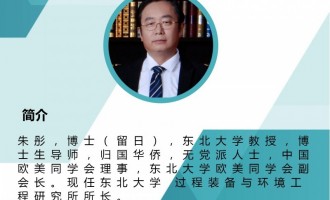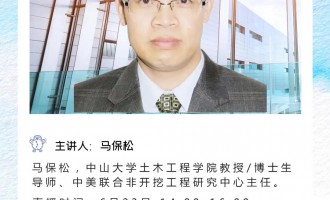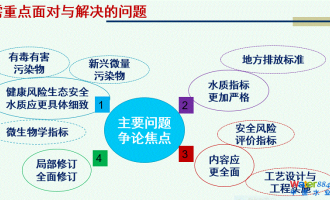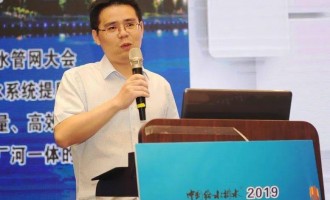碳中和:一个面向可持续污水处理厂可以实现的目标
碳中和是实现全球可持续污水处理厂的一项关键指标。几年前,欧洲和美国一些污水处理厂便开始了它们面向碳中和运行的脚步,并建议到2030年时实现各自碳中和运行。例如,荷兰STOWA(应用水研究基金组织)早在2008年对其污水处理厂回收资源与能源便便制定了路线图,并为此提出了面上未来污水处理厂的NEWs(营养物+能源+再生水工厂)概念。许多研究与工程试验已被用于探知从污水中回收能源,以满足污水处理运行现场能量自给自足的可行性;这些举措亦支持减少污水处理厂全生命周期温室气体排放的相关目标。一些能量中和运行的污水处理厂已在一些欧美国家出现,但是,面向碳中和运行目标的发展进程仍未很好建立。
实际上,碳中和常常与能量中和等同起来。从污水中回收资源以及低能耗污水处理的技术研发具有宽广的范围,包括从进水有机物及剩余污泥中回收能源、基质共消化、热量回收、污泥焚烧等等。然而,除了能量之外,污水处理厂也常常从处理工艺本身和对资源消耗中(如,化学药剂、混凝土等)诱发更多温室气体问题(例如,难以捕捉的N2O 或CH4)。因此,有关能源消耗、能量回收/生产、以及温室气体直接排放与间接排放的一系列解决方案均需研发,以建立污水处理厂作为碳中和运行的实体形式存在。
在此情形下,《Water Reaserch》编委会于2014年夏天决定出版一期与碳中和运行相关的专刊。本专刊旨在讨论新理念、新思想,以此推动研发节能与能量回收为目的的污水处理技术并运行污水出来厂。从大约50篇特邀与开放投稿中,我们根据同行评审结果筛选出13篇论文,涵盖面向能量回收潜能、基质共消化目标的新工艺、新方法研发,以定量、定向多尺度范围内的可持续性平衡。
Potentials of energy recovery from wastewater treatment and/or wastewaterheat
从污水处理或污水热量中回收能源潜能
Excess sludge is definitely animportant energy source to be recovered via anaerobic digestion. However, theamount of excess sludge depends heavily on the influent organic (carbon source:COD) concentrations. In some cases, carbon sources are insufficient,and barelymeet the needs of nutrient removal, and thus energy neutrality cannot beachieved, or is incompatible with conventional nutrient removal. Anaerobicdigesters generally have surplus capacity (about 20% in Germany), which isavailable for co-substrate digestion along with excess sludge. This ishighlighted by a full-scale study in Austria demonstrating the use of existinginfrastructure by addition of organic wastes (organic fraction of municipal waste) to anaerobic digesters to improve the energybalance of a WWTP substantially, resulting in “1+1>2” in terms of biogas production and solidsreduction (Aichinger et al.). The results reveal that organic co-substrateaddition of up to 94% of the organic sludge load resulted in tripling thebiogas production and that at an organic co-substrate addition of up to 25% nosignificant increase in cake production was observed and only a minor increasein ammonia release of about 20% was detected. The case studies fullydemonstrated co-digestion for maximizing synergy as a step towards energyefficiency and ultimately towards carbon neutrality.
On the otherhand, thermal energy in wastewater could be converted into heat to balance theenergy deficit towards carbon neutrality. An evaluation study on the energybalance of WWTPs (generally COD=200-400 mg/L) reveals that anaerobic digestionof excess sludge only provides some 50% of the total amount of energy consumptionin China (Hao et al.). The study furtherindicates that water source heat pumps (WSHP) could effectively convert thethermal energy contained in wastewater to heat WWTPs and neighborhoodbuildings, which could supply a net electrical equivalency of 0.26 kWh/m3× ℃ when 1 m3 of the effluent is cooled by 1 ℃. Overall,therefore, organic and thermal energy sources could effectively supply enoughelectrical equivalency for China to reach to its target with regards tocarbon-neutral operations.
Co-substratedigestion of both organics and inorganics (CO2)
有机物与无机物(CO2) 基质共消化
As mentioned above, co-digestion of excesssludge with external solid/liquid organics is a potential approach to carbonneutrality. CO2 addition was also tested to stimulate methaneproduction in digestion. A bench-scale investigation proved that high methaneproduction was achievable with the addition of concentrated external organicwastes to municipal digesters, at acceptably higher levels of digester organicloadings and with lower retention times. This allowed the effectiveimplementation of combined heat and power (CHP) programs at municipalwastewater treatment plants, with significant cost savings (Tandukar andPavlostathis). Industrial liquid waste obtained from a chewing gummanufacturing plant (GW) and dewatered fat-oil-grease (FOG) were chosen as theexternal organics, and co-digestion of excess sludge (primary + secondary at40:60 w/w TS basis) with GW, FOG or both was evaluated using four bench-scale,mesophilic (35 oC) digesters. The results show that biogasproduction increased significantly and additional degradation of the excesssludge between 1.1 and 30.7% was observed. Both biogas and methane productionswere very close to the target levels necessary to close the energy deficit.Furthermore, co-digestion resulted in an effluent quality similar to that ofthe control digester fed only with the excess sludge, indicating thatco-digestion had no adverse effects.、
Co-digestionof other organics than excess sludge has identical mechanisms and is often thebasis of co-digestion of excess sludge. A bench-scale study on co-digestion ofdairy manure (MN) with external organics (food waste - FW, alkaline hydrolysate– AH and crude glycerol - GY) evaluated the long-term stability of anaerobicdigesters compared to mono-digestion. Microbiome succession and time-scalevariability was also assessed (Usack and Angenent; Regueiro et al.). After operating for 900 d, four mesophilic individualco-digesters demonstrated different behaviors on both specific methane yield(SMY)/produced inhibitory compounds, and links between changing environmentalconditions and the microbiome composition. Among other things, GY co-digestionresulted in an optimum SMY of 549±25 mL CH4/g VS at a total organicloading rate (OLR) of 3.2 gVS/L·d (MN:GY = 62:38); stable digestion beyond this level was restricted by anaccumulation of long-chain fatty acids and foaming (Usackand Angenent). FD and AH co-digestion had the almost SMY (around 300 CH4/gVS at OLD=3.9 and 2.7 g VS/L·d;MN:FW = 51:49 and MN:AH = 75:25) ; FW caused no reduction in performance orstability, but AH caused free ammonia concentration at levels previouslyreported as inhibitory, and may have led to the observed accumulation ofvolatile fatty acids at higher loading rates (Usackand Angenent). Moreover, high throughput 16S rRNA gene sequencing, examiningthe microbiome succession revealed that the AH reactor microbiome shifted andadapted to high concentrations of free ammonia, total volatile fatty acids, andpotassium to maintain its function, and that adding FD and GY as co-substratesalso led to microbiome changes, but to a lesser extent, especially in the caseof the GY digester microbiome (Regueiro et al.).
As is well known, carbon dioxide (CO2) is a product alongwith methane production during digestion. On the other hand, CO2enrichment of anaerobic digesters (AD) was previously identified as a potentialon-site carbon revalorization strategy. Two pilot-scale ADs treating food wastewere monitored for 225 d, with the test unit being periodically injected withCO2 using a bubble column (Fernández et al.). The test ADmaintained a CH4 production rate of 0.56±0.13 m3 CH4/kg VS×d (vs 0.45±0.05 in the control) while maintaining a CH4concentration in biogas of 68%. An additional uptake of 0.55 kg of exogenous CO2. A 2.5fold increase in hydrogen (H2) concentration was observed andattributed to CO2 dissolution and to an alteration of the acidogenesisand acetogenesis pathways.
New processes for organic energy conversion from wastewater
从污水有机物中转化能源新工艺
High-rate activated sludge (HRAS)processes (like the A stage in the A/B process) are often used to sequesterorganics from wastewater for energy generation in an efficient manner. A HRASpilot plant at psychrophilic temperatures was operated under controlledconditions. This enabled concentration of influent particulate, colloidal, andsoluble COD to a waste solids stream with minimal energy input, by maximizingsludge production, bacterial storage, and bioflocculation (Jimenez et al.). Results indicatethat important design parameters such as SRT, HRT and DO had little impact onthe removal of soluble COD. Therefore, controlling and maximizing removal ofcolloidal and particulate COD while minimizing mineralization and hydrolysis ofthe slowly biodegradable COD is pivotal for carbon redirection. Operating at alow SRT and HRT, the observed yield was near its maximum resulting in optimaluse of COD for biomass production near maximum sludge production rates. Underthese operating conditions, the HRAS systems required almost 60% less aerationenergy to remove a large fraction of the influent COD (50-80%) when compared toa conventional HRAS process.
Physicallysequestering organics (fine sieved fraction – FSF: mainly toilet paper) from wastewater is being proposed for energy generation. Abench-scale SBR study on digesting FSF from the influent of a municipal WWTP inthermophilic (55 °C) andmesophilic (35 °C)digesters demonstrated that FSF is a readily digestable solids stream. Decreasingthe AD batch cycle period resulted in improved digester performances,particularly with regard to the thermophilic digester, i.e. shortened lagphases and reduced VFAs’ peaks (Ghasimi et al.). Moreover, the two digesters harbored very differentbacterial and archaeal communities, with OP9 lineage and Methanothermobacterbeing pre-dominant in the thermophilic digester and Bacteroides and Methanosaetadominating the mesophilic digester.
Methane production via digestion is highly temperature dependent. Instead,sequestering organics via conventional primary clarification could directly beintegrated with psychrophilic anaerobic digestion for methane production. Apilot-scale anaerobic baffled reactor (ABR) was operated for more than twoyears to treat raw wastewater at water temperatures ranging from 12 to 23 ˚C (Hahn andFigueroa). The ABR not only exceeded the goal of meeting conventionalprimary clarification (TSS=83±10%, COD=43±15% and BOD5=47±15%), butalso enabled direct capture of the biogas (average 0.45 kWh/m3).Moreover, no settled sludge was wasted from the reactor in over two years ofoperation. Thus, an ABR can be implemented in place of a primary clarifier withmesophilic anaerobic digestion and achieve the same treatment outcomes in asingle unit process at ambient temperature, which does not require input ofenergy or chemical treatment. This paper also extensively assessed thepotential of methane to supersaturate.
Stimulating methane production in digestion could also be enhanced bysome innovative technologies such as microbial electrolysis cells (MEC). Anelectrically-assisted digester (EAD: equipped with a MEC bioanode and cathode)and a control digester were applied to treat waste activated sludge from amunicipal WWTP under ambient temperature conditions (22-23 °C) and three SRTs (7, 10 and 14 d) (Asztalos andKim).The EAD showed reduced concentration of acetic acid, propionic acid, n-butyricacid and iso-butyric acid, thought to be due to direct oxidation of theshort-chain fatty acids at the bioanode as well as an indirect contribution oflow acetic acid concentration to enhancing beta-oxidation. The VSS and CODremoval was consistently higher in the EAD by 5-10%, compared to the controldigester for all conditions. Furthermore, the magnitude of electrical currentin the EAD was governed by the organic loading rate while conductivity andacetic acid concentration showed negligible effects on current generation.
Different routesto carbon neutrality and sustainability
面向碳中和与可持续性的不同路径
As mentioned above, carbon neutrality isoften referred to energy neutrality. There are however, manyother routes to carbon neutrality. This includes the management of heat resourcesand nutrient recovery from urine, as the greatest potential for reduction ofgreenhouse gas emissions is at the household level (i.e. decentralized systems),and thus robust wastewater management must be able to cope with the possibilityof a temperature decrease as a result (Larsen). In WWTPs, there is substantial potential for energyoptimization, both from improving electromechanical devices and sludgetreatment as well as through the implementation of more energy-efficientprocesses such as mainstream Anammox process or nutrient recovery from urine. Whethercarbon neutrality can be achieved depends not only on actual net electricityproduction, but also on the type of electricity replaced: the cleaner themarginal electricity, the more difficult to compensate for direct emissions,which can be substantial, depending on the stability of the biologicalprocesses. It is possible, for example, to combine heat recovery and nutrientrecovery from urine at the household level, both of which have considerable potentialto improve the climate friendliness of wastewater management.
Improvingthe energy balance of WWTPs, with the aim of moving towards carbon neutrality,may benefit the environment due to reduced carbon emissions. However, there isalso a need to explore wider economic, environmental and societal impacts, assustainability is a complex, multi-dimensional concept comprising of thesefactors and/or indicators. In this respect, ‘carbon neutrality’ or ‘energyneutrality’ do not necessarily imply sustainable operation as they address onlyone element of sustainability and implementation of low carbon solutions mayhave unintended detrimental effects on other aspects. An evaluation studydemonstrates that reducing energy use and/or increasing energy recovery toreduce net energy can be detrimental to sustainability (Sweetapple etal.).In the study, sustainability indicators including operational costs, net energyand multiple environmental performance measures are calculated. This enables identificationof trade-offs between different components of sustainability, which must beconsidered before implementing energy reduction measures. A major conclusion, highlightedat the end, is that improving the energy balance (as may be considered an approachto achieving carbon reduction) is not a reliable means of reducing totalgreenhouse gas emissions.
Apositive analysis of carbon neutrality towards sustainability illustrates thatthere are design and operational conditions under which submerged anaerobicmembrane bioreactors (AnMBRs) could be net energy positive and contribute tothe pursuit of carbon negative wastewater treatment (Pretel et al.). In this analysis,a quantitative sustainable design process was leveraged to develop a detaileddesign of submerged AnMBR by evaluating the full range of feasible designalternatives using technological, environmental, and economic criteria, whichintegrated steady-state performance modeling across seasonal temperatures(using pilot-scale experimental data and the simulating software DESASS), lifecycle costs (LCC) analysis, and life cycle assessment (LCA). Ultimately, theauthors demonstrate the need to integrate economic and environmentalassessments in decision-making by quantifying how mitigating GHG emissions maytransition from being financially advantageous to prohibitively expensive, evenacross a single design decision.
Taken altogether, these articles advance our understanding of howto achieve carbon neutral WWTPs. This laudable goal will undoubtedly require aportfolio of solutions, requiring academia and industry to work together onnumerous fronts to establish WWTPs as not only a protector of the local aquaticenvironment, but also the global environment that we all share.
XiaodiHao*
Beijing University of Civil Engineering and Architecture, China
Damien Batstone
The University of Queensland, Australia
Jeremy S. Guest
University of Illinois at Urbana-Champaign, USA
*Corresponding author.
E-mail address: haoxiaodi@bucea.edu.cn(X.-D. Hao).
===================================================
杂志简介
《中国给水排水》是面向全国给水排水和环境工程界的专业性科技期刊,具有较高的理论导向性和较强的工程实践性,被称为中国水行业的“首席杂志”、中文核心期刊、“中国百强科技期刊”中国精品科技期刊、中国科学引文数据库来源期刊(CSTP)。
专家观点︱污水处理碳中和运行需要污泥增量
编者按污水处理碳中和运行已成为未来污水处理的核心内容,这就使得剩余污泥将成为潜在的能源载体物质,需要以增量方式去获得,从而彻底改变污泥是污水处理过程中的一种“负担”、需以减量方式消灭之的现行观念。为此,欧美等国家通过COD内源截留与外源挖潜方式最大限度地去实现“污泥增量”。对我国市政污水COD普遍偏低的情况,应寻求与厨余垃圾等市政有机固体废弃物共消化之机会方能实现“污泥”增量的目的。
污水处理朝着碳中和运行方向迈进早已成为欧美国家污水处理今后的发展方向。如果以碳中和运行为目标,剩余污泥显然将不再成为污水处理的“负担”,转而变成碳中和运行的紧俏原料。为此,污水处理行业不再需要去一味追求污泥减量化,转而期盼污泥增量化,以增加污水处理能源自给自足的原料份额。然而,剩余污泥的多寡完全取决于进水COD负荷的高低,低的COD负荷必然导致较少的剩余污泥产量,也就意味碳中和运行能量需求可能会出现赤字。因此,以碳中和运行为目标的污泥增量近年来已在国际上悄然兴起,在常规剩余污泥之外还会寻求内源和外源其它途径的污泥增量,如,前端筛分COD技术、后端厌氧共消化技术等。
荷兰早在2008年便提出了污水处理的NEWs概念,将未来污水处理厂描述为“营养物(Nutrient)”、“能源(Energy)”、“再生水(Water)”三厂(Factories)合一的运行模式。
日本有关部门发布“Sewerage Vision 2100”,指出到本世纪末将完全实现污水处理能源自给自足。
目前,欧美国家一些污水处理厂以剩余污泥为主要能源载体,同时结合前端筛分COD(进水COD负荷高时)技术,或后端厌氧共消化(厨余垃圾、食品加工废料、粪便等)技术,以最大化“污泥增量”方式从污水或外源有机物中通过厌氧消化获取能源(CH4),并已完全或部分实现碳中和运行目标。污泥能源转化碳中和运行潜力欧美等国家一些实施碳中和运行目标的污水处理厂也大都以剩余污泥厌氧消化转化能源为主要手段。欧洲等国家因生活习惯、无化粪池、雨污分流、食物破碎等原因往往会形成较高进水COD浓度(600~1 000 mg/L)。一些欧美以碳中和为运行目标的污水处理实例表明,如果进水中COD£600 mg/L,采用传统处理工艺(如A2/O等脱氮除磷工艺)所产生的剩余污泥量通过厌氧消化转化能源很难完全满足(100%)碳中和运行目标,一般能达到70%碳中和运行率就已足矣。
我国污水中有机物含量较欧美等国家要低得多,因而仅靠产生的剩余污泥难以实现碳中和运行目标。图1绘出了能量平衡计算中剩余污泥(初沉+二沉)COD截留率(污泥中总COD与进水COD之比)与碳中和率的关系曲线。图1趋势表明,要想获得更大的碳中和运行率便需要有更多的污泥相对应,即,所谓的“污泥增量”概念。污泥增量从内源COD来源角度看,意味着进水中的COD除满足脱氮除磷对碳源的需求外,应避免COD无目的的直接氧化。
早在15年前,针对定位于能源与磷回收的可持续市政污水处理,与荷兰代尔夫特理工大学(TU Delft)Mark van Loosdrecht教授合作,我们便提出了如图2所示的概念工艺。为有效截留污水多余(脱氮除磷所需碳源之外)COD并厌氧消化转化为甲烷,利用早年德国A/B法中的A段用于浓缩悬浮状与溶解状COD。与二沉污泥相比,A段截留污泥可消化性较好,可产生甲烷含量较高的生物气。
为最大程度截留进水中COD,欧洲学者还提出通过絮凝后微滤方式截留胶体状与溶解状COD,使之用于厌氧消化转化甲烷的设想并付诸行动。例如,德国柏林某水务集团融资并联合德国KWB组织已经启动旨在回收污水中能源的应用研究项目—CARISMO(Carbon is money,即,碳即是钱),工艺流程如图3所示。
图3 德国CARISMO前端COD筛分及后续污水、污泥处理工艺
污泥共消化发挥了基质间的协同作用,提高了底物的降解速率和降解程度,使能源转化效率显著提高。表1列出了几种不同外源有机废弃物与剩余污泥共消化后呈现出的能量转化效果,剩余污泥与其它有机废弃物共消化潜力可见一斑。
表1 不同种类/比例外源基质与污泥共消化能源转化效果
|
共消化基质 |
共消化比例 (剩余污泥: 有机废物) |
生物气 增加量 (%) |
参考文献 |
|
餐厨垃圾 |
4:1 |
21 |
[34] |
|
石莼藻 (Ulva sp.) |
17:3 |
26 |
[35] |
|
油脂废弃物 |
2:3 |
285 |
[36] |
|
灭菌后屠 宰废水 |
19:1 |
470 |
[37] |
从技术角度来说,污水处理碳中和运行并不存在障碍,主要受限于政府的宏观环境政策。只要政府高瞻远瞩,予以政策支持、甚至是财政补贴,触动污水处理行业朝着碳中和方向迈进,从而获得被普遍看好的综合环境效益。该文章全文将于近期发表在《中国给水排水》杂志的“述评与讨论”栏目。
杂志简介
《中国给水排水》是面向全国给水排水和环境工程界的专业性科技期刊,具有较高的理论导向性和较强的工程实践性,被称为中国水行业的“首席杂志”、中文核心期刊、“中国百强科技期刊”中国精品科技期刊、中国科学引文数据库来源期刊(CSTP)。
来源:《中国给水排水》
污水处理碳中和:污泥增量化如何实现碳中和运行
污水处理朝着碳中和运行方向迈进早已成为欧美国家污水处理今后的发展方向。如果以碳中和运行为目标,剩余污泥显然将不再成为污水处理的“负担”,转而变成碳中和运行的紧俏原料。为此,污水处理行业不再需要去一味追求污泥减量化,转而期盼污泥增量化,以增加污水处理能源自给自足的原料份额。
然而,剩余污泥的多寡完全取决于进水COD负荷的高低,低的COD负荷必然导致较少的剩余污泥产量,也就意味碳中和运行能量需求可能会出现赤字。因此,以碳中和运行为目标的污泥增量近年来已在国际上悄然兴起,在常规剩余污泥之外还会寻求内源和外源其它途径的污泥增量,如,前端筛分COD技术、后端厌氧共消化技术等。
国外剩余污泥能源转化现状
污水处理碳中和运行的实质就实现整个污水处理过程能源自给自足,为实现这一目标,欧美、甚至周边一些亚洲国家相继颁布了面向21世纪污水处理碳中和运行的路线图,并付诸实践。例如:荷兰早在2008年便提出了污水处理的NEWs概念,将未来污水处理厂描述为“营养物(Nutrient)”、“能源(Energy)”、“再生水(Water)”三厂(Factories)合一的运行模式。美国推行的“Carbon-free Water”,期望实现在人们对水的取用、分配、处理、排放全过程达到碳中和。日本有关部门发布“Sewerage Vision 2100”,指出到本世纪末将完全实现污水处理能源自给自足。
目前,欧美国家一些污水处理厂以剩余污泥为主要能源载体,同时结合前端筛分COD(进水COD负荷高时)技术,或后端厌氧共消化(厨余垃圾、食品加工废料、粪便等)技术,以最大化“污泥增量”方式从污水或外源有机物中通过厌氧消化获取能源(CH4),并已完全或部分实现碳中和运行目标。
污泥能源转化碳中和运行潜力
欧美等国家一些实施碳中和运行目标的污水处理厂也大都以剩余污泥厌氧消化转化能源为主要手段。欧洲等国家因生活习惯、无化粪池、雨污分流、食物破碎等原因往往会形成较高进水COD浓度(600~1 000 mg/L)。一些欧美以碳中和为运行目标的污水处理实例表明,如果进水中COD£600 mg/L,采用传统处理工艺(如A2/O等脱氮除磷工艺)所产生的剩余污泥量通过厌氧消化转化能源很难完全满足(100%)碳中和运行目标,一般能达到70%碳中和运行率就已足矣。
我国污水中有机物含量较欧美等国家要低得多,因而仅靠产生的剩余污泥难以实现碳中和运行目标。图1绘出了能量平衡计算中剩余污泥(初沉+二沉)COD截留率(污泥中总COD与进水COD之比)与碳中和率的关系曲线。趋势表明,要想获得更大的碳中和运行率便需要有更多的污泥相对应,即,所谓的“污泥增量”概念。污泥增量从内源COD来源角度看,意味着进水中的COD除满足脱氮除磷对碳源的需求外,应避免COD无目的的直接氧化。
污泥增量方法与措施
A/B法A段浓缩COD
早在15年前,针对定位于能源与磷回收的可持续市政污水处理,与荷兰代尔夫特理工大学(TU Delft)Mark van Loosdrecht教授合作,我们便提出了如图2所示的概念工艺。为有效截留污水多余(脱氮除磷所需碳源之外)COD并厌氧消化转化为甲烷,利用早年德国A/B法中的A段用于浓缩悬浮状与溶解状COD。与二沉污泥相比,A段截留污泥可消化性较好,可产生甲烷含量较高的生物气。
前端筛分COD技术
为最大程度截留进水中COD,欧洲学者还提出通过絮凝后微滤方式截留胶体状与溶解状COD,使之用于厌氧消化转化甲烷的设想并付诸行动。例如,德国柏林某水务集团融资并联合德国KWB组织已经启动旨在回收污水中能源的应用研究项目—CARISMO(Carbon is money,即,碳即是钱),工艺流程如图3所示。
污泥共消化技术
污泥共消化发挥了基质间的协同作用,提高了底物的降解速率和降解程度,使能源转化效率显著提高。表1列出了几种不同外源有机废弃物与剩余污泥共消化后呈现出的能量转化效果,剩余污泥与其它有机废弃物共消化潜力可见一斑。
如果今后能将厨余垃圾、绿化草木、旱厕粪便与剩余污泥一并共消化,将会形成出现2种以上底物共消化情形。在研究与应用实践中,³3种有机底物共消化案例目前还十分罕见。这一课题应该成为今后厌氧共消化的研发方向,不仅可探明多基质协同消化的机理与作用,而且也为综合处置市政有机固体废弃物开辟一条可持续发展之路。
从技术角度来说,污水处理碳中和运行并不存在障碍,主要受限于政府的宏观环境政策。只要政府高瞻远瞩,予以政策支持、甚至是财政补贴,触动污水处理行业朝着碳中和方向迈进,从而获得被普遍看好的综合环境效益。来源:沈阳新华
全球能量自给污水处理厂Top 10
1. 奥地利Strass污水处理厂
处理规模约3.8万吨/日,处理工艺采用AB工艺,污泥厌氧消化并热电联产,号称是世界第一个实现能量自给的污水处理厂,Strass污水厂以实践主流厌氧氨氧化而闻名于世。
2.美国EBMUD污水处理厂
处理规模65万吨/日,处理工艺采用二级处理,污泥厌氧消化并热电联产,该厂是美国乃至全球污泥协同厌氧消化的典范。
3. 德国汉堡污水处理厂
处理规模44万吨/日,处理工艺为AB工艺,污泥厌氧消化并热电联产,同时污泥干化并焚烧。
4. 荷兰Apeldoorn污水处理厂
处理规模4.5万吨/日,处理工艺采用脱氮除磷工艺,污泥厌氧消化并热电联产,该厂在侧流应用了DEMON,并进一步准备实践污泥热水解。
5. 丹麦Ejby Molle污水处理厂
处理规模5万吨/日,处理工艺采用氧化沟工艺,污泥厌氧消化并热电联产,该厂的曝气自控非常出色。
6. 美国Sheboygan污水处理厂
处理规模4.3万吨/日,处理工艺为传统脱氮除磷工艺,污泥厌氧消化并热电联产,该厂的一个特色是热电联产设备采用了微型燃气轮机。
7. 德国Steinhof污水处理厂
处理规模6万吨/日,处理工艺为A2O工艺,污泥厌氧消化并热电联产。
8. 匈牙利North Pest污水处理厂
处理规模13万吨/日,采用脱氮除磷工艺,污泥厌氧消化并热电联产。
9. 匈牙利South Pest污水处理厂
处理规模5万吨/日,生物处理,污泥厌氧消化并热电联产。
10. 美国Gloversville-Johnstown污水处理厂
处理规模5.3万吨/日,污泥厌氧消化并热电联产。
来源:water8848









































































































